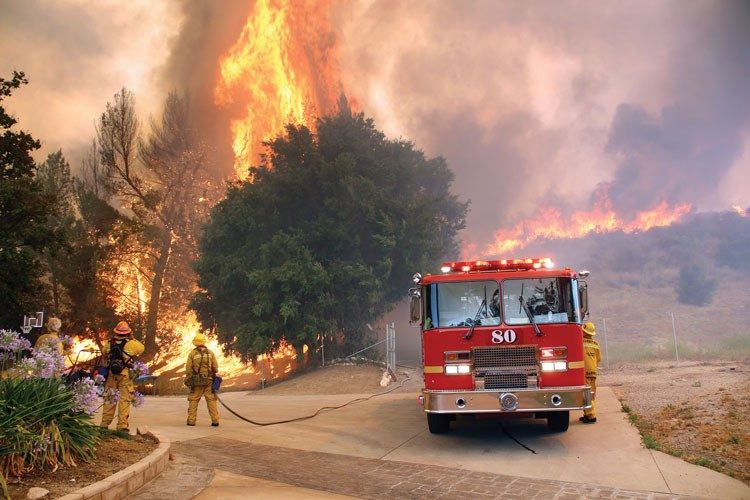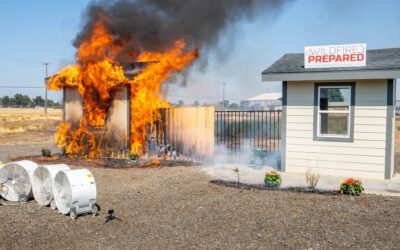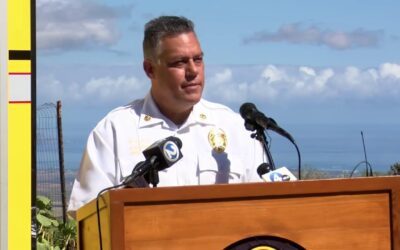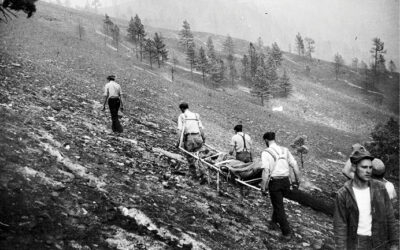This year was once again an extremely busy wildland fire season
It should be no surprise that the wildland fuels burn with the intensity observed because of the status of the fuel loading and prolonged drought in many geographic regions in the nation. (Photo by Jeff Zimmerman.)
Todd McNeal/FireRescue Magazine December 2016 Issue
Now that the 2016 fire season has concluded, all of us who were engaged in suppression or deployed to assist in incident management need to take a deep breath and catch a little break. This year was once again an extremely busy wildland fire season with nearly five million acres burned, numerous structures lost, and civilian and firefighter fatalities. It should be no surprise that the wildland fuels burn with the intensity observed because of the status of the fuel loading and prolonged drought in many geographic regions in the nation. I hope that at this point personnel have heard and read both me and many others warn of the elevated potential of the wildland fuel bed. This fact will continue into the 2017 season, even with some precipitation recovery over the winter because of the overall precipitation deficit of the past several years. An additional carryover into 2017 is the regional impact of tree mortality in California. This large-scale catastrophic event is expected to significantly change the availability and continuity of the timber fuel models in the coming years.
These challenging issues should be some of the many topics included in every department’s after action review (AAR) conducted internally or regionally with cooperators about experiences, lessons learned, and best practices developed during the 2016 season. The benefits of the AAR are enumerable and impactful when conducted after every significant event within your agency. The same powerful take-home information can be captured and incorporated into your future wildland responses when done at the end of season. The process is simple by design but can be enhanced or modified as each agency deems appropriate or necessary based on unique experiences during 2016.
AAR Process
The basic questions addressed during the AAR process include the following:
What was planned?
What happened?
Why did it happen?
What can we do to improve next time?
Regardless of whether your agency has a simple conversation at the company level or an agencywide multiday session, benefits and education will be realized. This capturing of critical events, improvements to tactics, what went well and what didn’t is the cornerstone of any agency’s self-assessment and improvement plan. The AAR process is an open, nonpunitive, supportive action that has the focus of identifying issues in need of correction and constructive criticism to channel improvement.
We Must All Learn From Each Other
At the foundation of the AAR process is the intent of learning and improving the performance and safety of responders operating in high-risk environments. The simple fact of using your own personal experiences or those of others to hone and shape the skills of the team is tried and tested. I am an advocate of supervisors modeling correct behavior to subordinates, and one elemental behavior is humble self-assessment. The forum or tool to demonstrate this desired behavior is the AAR.
Effective leaders are constantly looking for ways to improve their individual performance and that of the team. The strategies to improve that are identified during an AAR are the fundamental first steps in making positive change. Capturing the effectiveness and areas in need of improvement of an entire organization at the completion of a fire season drives change at the macro scale.
Active Listening Is Fundamental
For the AAR process to be effective, each member present must be actively engaged in listening to the issues raised by all the members present. The true value of the answers to the question asked and ideas raised can’t be realized if nobody is listening. We must all drop the default reaction of defensiveness when the need for improvement in our individual or team’s performance is identified.
If all members present understand that the AAR is not meant to cast blame or to embarrass, then recommendations can be captured and implemented. I can’t stress the fact enough that active listening must be used during an AAR.
Wildland fire response is a high-risk operation that can quickly grow to affect many aspects of our modern society. Wildland fire can threaten homes, civilian lives, critical watersheds, and major infrastructure in a very compressed timeline.
We in the fire service owe it to our communities to be as highly effective, well trained and equipped, and ready to improve as humanly possible. The seasonal level AAR process is a perfect activity to start that improvement process. Positive actions and negative outcomes experienced during the 2016 fire season can be identified and discussed and improvement strategies developed. It is important to recognize both positives and negatives directly experienced by one’s team or others in your operational area so as to correct or emulate during the upcoming 2017 fire season. We owe that to ourselves and to those who have gone before us.
 Todd McNeal is a 23-year veteran of the fire service and chief of Twain Harte Fire in Tuolumne County, California. He has a diverse background in wildland and structural fire management and suppression and has been serving as a division/group supervisor on a Federal Type II Incident Management Team for 10 years. McNeal has been an instructor in the fire service for 15 years, holds numerous ICS qualifications in wildland operations, is a registered instructor with California State Fire Training and a California fire officer, and has a bachelor’s degree in natural resource management.
Todd McNeal is a 23-year veteran of the fire service and chief of Twain Harte Fire in Tuolumne County, California. He has a diverse background in wildland and structural fire management and suppression and has been serving as a division/group supervisor on a Federal Type II Incident Management Team for 10 years. McNeal has been an instructor in the fire service for 15 years, holds numerous ICS qualifications in wildland operations, is a registered instructor with California State Fire Training and a California fire officer, and has a bachelor’s degree in natural resource management.





